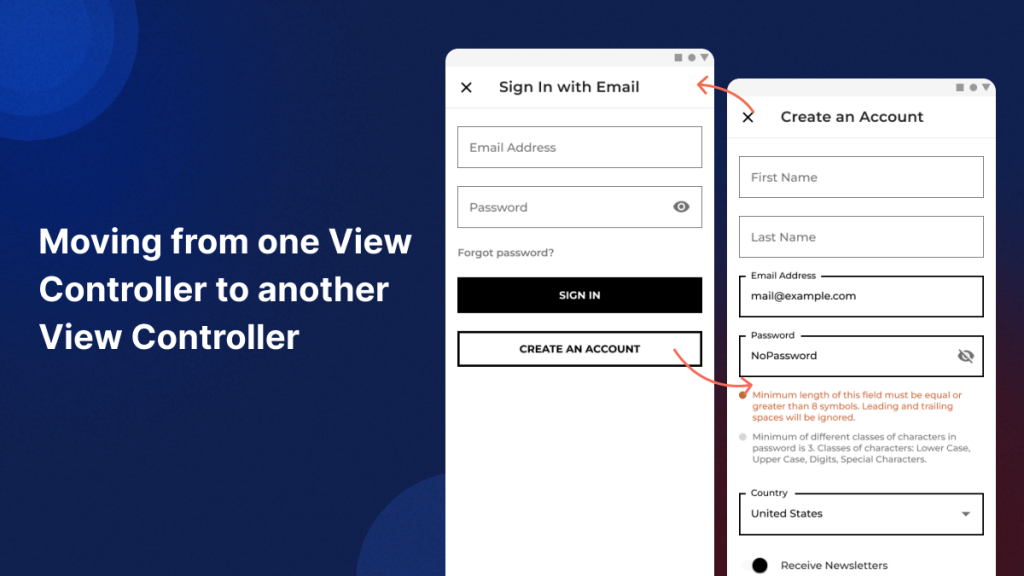Greetings fellow readers, today in this Mobikul blog we will learn a way to move from one View Controller to another View Controller

Introduction
Moving between the view controllers or from one View Controller to another is a common practice in Application development. We usually perform such tasks for displaying different views while keeping the previous view intact on our view stack.
But do you know there you can move from one view controller to another through various methods? Well, here in this blog we are going to see some methods you can use for switching between the view controllers.
Ways to move from one viewController to another
Although there are many ways to perform the navigation in iOS and every method has its pros and cons. We usually use the navigation methods based on our requirements or design needs.
Here are some ways you can use in your iOS development to move from one viewController to another.
1. Using Segues (Storyboard)
It is the most common practice for transitioning segue between view controllers in iOS development. You can implement the method by following the below steps.
Step 1. In the first step, you need to open the storyboard and connect the two storyboards through the segue with the appropriate segue type.
Sete 2. Once successfully connected, use the performSegue method in the source viewController.
2. Using Navigation Controller
The navigation controller provides a stack-like hierarchical way to navigate through the viewController and push and pop the controller from the stack.
You can navigate through the Navigation Controller by following the below steps.
Step1. Embed the ViewController in the navigation controller from the storyboard.
Step2. Use pushViewControoler and popViewController to go back and forth between the view controllers.
3. Present ViewController Modally:
You can also present view controllers modally to overlay them on top of your current controller context. You can use present and dismiss methods in the view controller to give the push and pop-like feel.
Conclusion
In conclusion, moving from one view controller to another is a fundamental aspect of iOS app development, enabling the creation of complex and navigable user interfaces. With this blog, we have learned some ways to move from one view controller to another.
You can keep learning more with the Mobikul Blogs.

2 comments